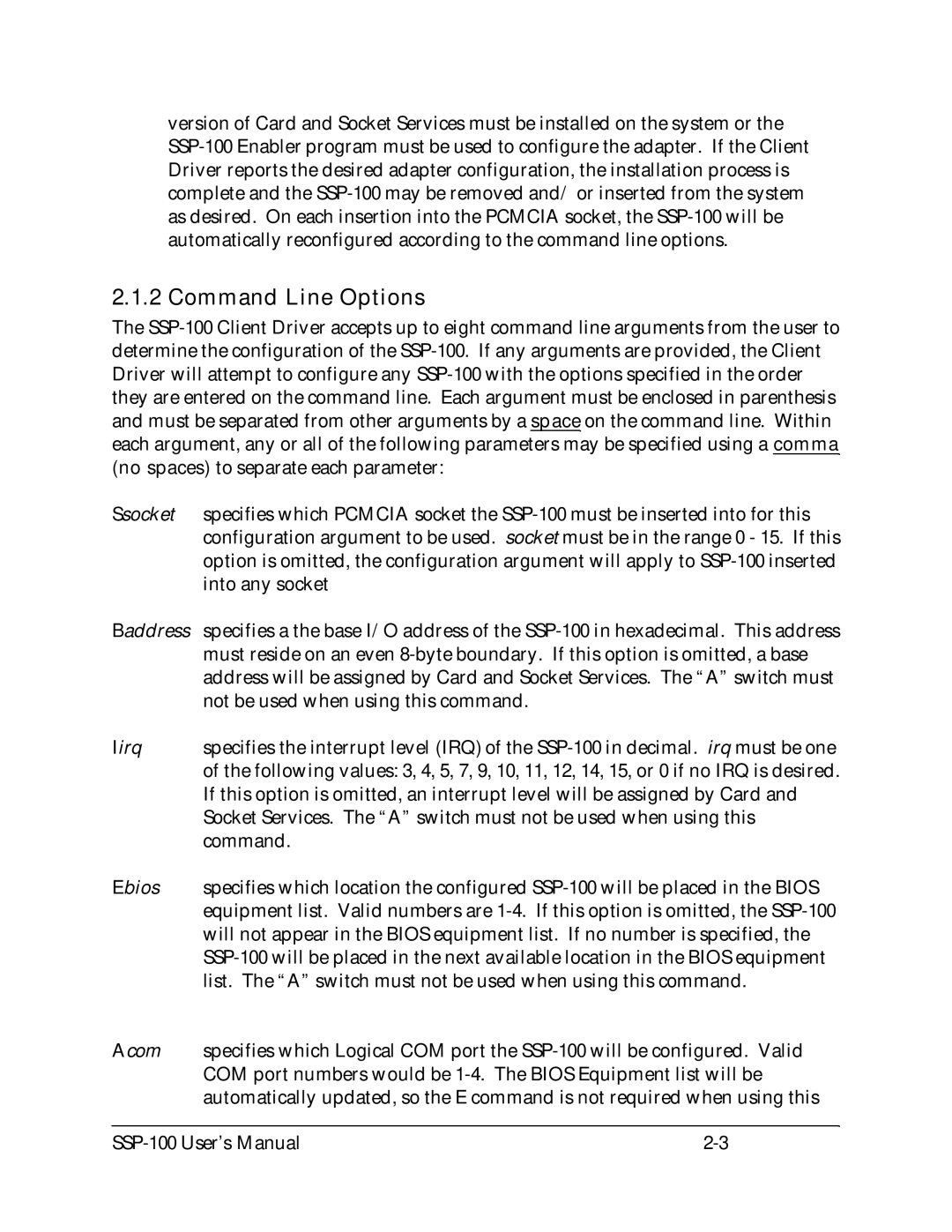
version of Card and Socket Services must be installed on the system or the
2.1.2 Command Line Options
The
Ssocket | specifies which PCMCIA socket the |
| configuration argument to be used. socket must be in the range 0 - 15. If this |
| option is omitted, the configuration argument will apply to |
| into any socket |
Baddress | specifies a the base I/O address of the |
| must reside on an even |
| address will be assigned by Card and Socket Services. The “A” switch must |
| not be used when using this command. |
Iirq | specifies the interrupt level (IRQ) of the |
| of the following values: 3, 4, 5, 7, 9, 10, 11, 12, 14, 15, or 0 if no IRQ is desired. |
| If this option is omitted, an interrupt level will be assigned by Card and |
| Socket Services. The “A” switch must not be used when using this |
| command. |
Ebios | specifies which location the configured |
| equipment list. Valid numbers are |
| will not appear in the BIOS equipment list. If no number is specified, the |
| |
| list. The “A” switch must not be used when using this command. |
Acom | specifies which Logical COM port the |
| COM port numbers would be |
| automatically updated, so the E command is not required when using this |
